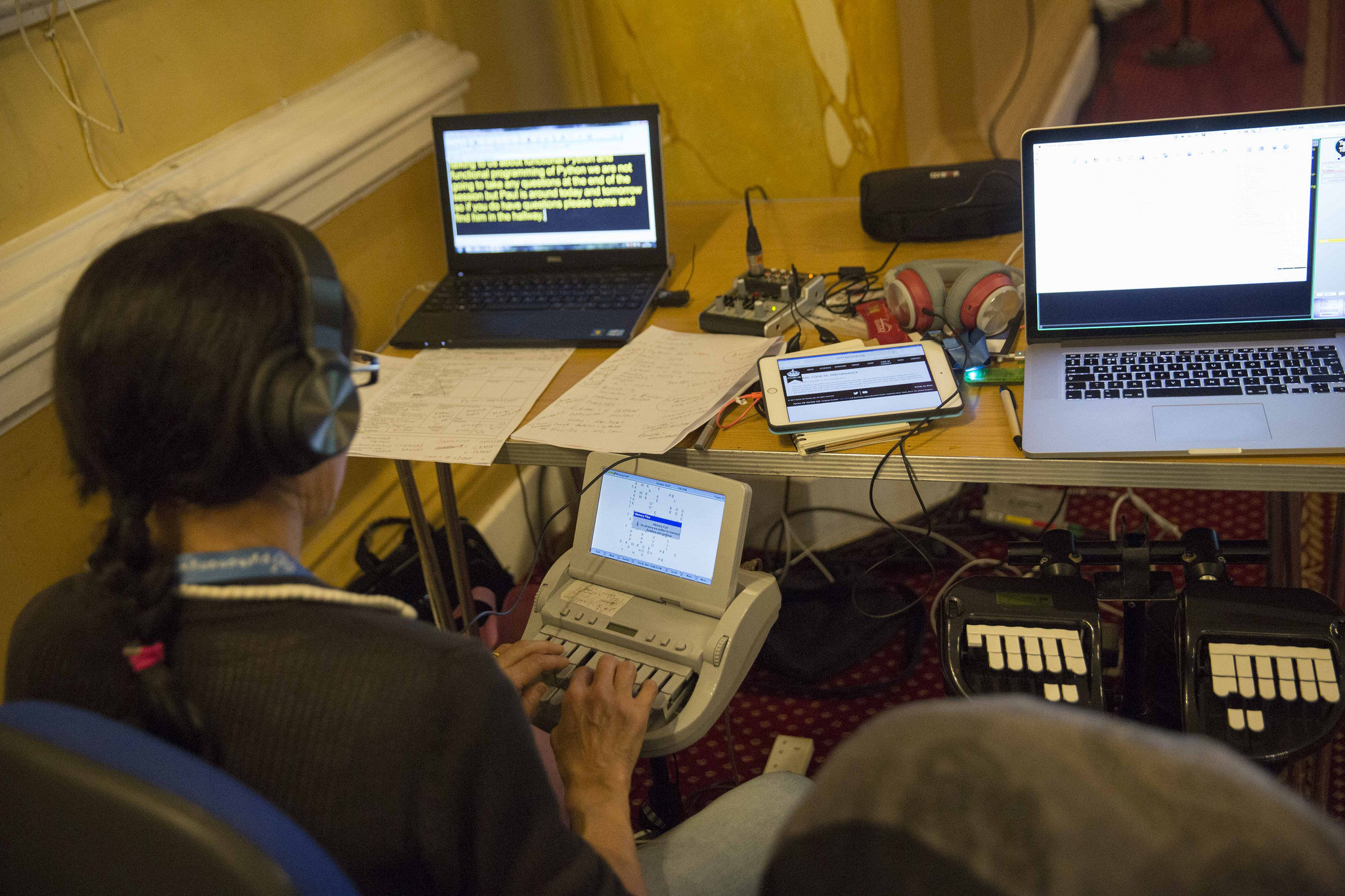Live captioning in talks
Hiring a stenographer means you can provide real-time captioning of talks, which makes them easier to follow for people who are deaf and hard-of-hearing.
The real-time captions can be displayed on screens alongside the speaker, showing what they’re saying. Primarily this helps people who are deaf, hard-of-hearing, or non-native speakers. It can also help if somebody misses a word, the speaker has a strong accent, or their focus drifts – the transcript gives them a way to catch up.
To support the captioners, ask speakers for specialist/technical terms in advance. They can be programmed into the stenographer’s special keyboards, so you get more accurate captions.
Make sure the screen(s) showing the captions are easily visible – ideally raised enough that they’re visible from more than just the front row, and on both sides of the stage if you have room.
Captioning can happen in-person (when the captioner travels to the event), or it’s possible to do it remotely over Skype.
I first saw this at PyCon UK 2016, but I’ve since seen it at lots of other conferences.
Further reading
-
Ashley Nelson-Hornstein has a blog post describing the value of live captioning at UIKonf.
-
Lindsey Kuper, one of the !!Con organisers, explained the value of having live captions at the conference.
